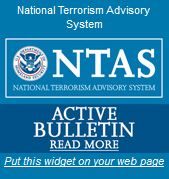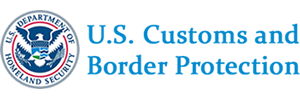175.101 Applicability.
This subpart applies to boats on the coastal waters of the United States and on the high seas beyond the territorial seas for boats owned in the United States.
[CGD 76-183, 44 FR 73024, Dec. 17, 1979, as amended by USCG-1998-3799, 63 FR 35534, June 30, 1998]
175.105 Definitions.
- Visual distress signal means a device that is approved by the Commandant under 46 CFR Part 160 or certified by the manufacturer under 46 CFR Parts 160 and 161.
- Coastal waters means:
-
-
- The U.S. waters of the Great Lakes (Lake Erie, Huron, Michigan, Ontario, and Superior);
- The territorial seas of the United States; and
- Those waters directly connected to the Great Lakes and territorial seas (i.e., bays, sounds, harbors, rivers, inlets, etc.) where any entrance exceeds 2 nautical miles between opposite shorelines to the first point where the largest distance between shorelines narrows to 2 miles, as shown on the current edition of the appropriate National Ocean Service chart used for navigation. Shorelines of islands or points of land present within a waterway are considered when determining the distance between opposite shorelines.
-
-
[CGD 76-183, 44 FR 73024, Dec. 17, 1979, as amended by CGD 82-073, 49 FR 7119, Feb. 27, 1984; 49 FR 20815, May 17, 1984]
175.110 Visual distress signals required.
- No person may use a boat 16 feet or more in length, or any boat operating as an uninspected passenger vessel subject to the requirements of 46 CFR chapter I, subchapter C, unless visual distress signals selected from the list in § 175.130 or the alternatives in § 175.135, in the number required, are onboard. Devices suitable for day use and devices suitable for night use, or devices suitable for both day and night use, must be carried.
- Between sunset and sunrise, no person may use a boat less than 16 feet in length unless visual distress signals suitable for night use, selected from the list in § 175.130 or § 175.135, in the number required, are on board.
[CGD 76-183, 44 FR 73024, Dec. 17, 1979, as amended by USCG-1999-5040, 67 FR 34760, May 15, 2002]
175.113 Launchers.
(a) When a visual distress signal carried to meet the requirements of § 175.110 requires a launcher to activate, then a launcher approved under 46 CFR 160.028 must also be carried.
175.115 Exceptions.
The following persons need not comply with § 175.110; however, each must carry on board visual distress signals suitable for night use, selected from the list in § 175.130 or § 175.135, in the number required, between sunset and sunrise:
- A person competing in any organized marine parade, regatta, race, or similar event;
- A person using a manually propelled boat; or
- A person using a sailboat of completely open construction, not equipped with propulsion machinery, under 26? in length.
175.120 Stowage.
No person may use a boat unless the visual distress signals required by § 175.110 are readily accessible.
[CGD 93-055, 61 FR 13926, Mar. 28, 1996, as amended by USCG-1999-5832, 64 FR 34715, June 29, 1999]
175.125 Serviceability.
No person may use a boat unless each signal required by § 175.110 is in serviceable condition and the service life of the signal, if indicated by a date marked on the signal, has not expired.
[CGD 93-055, 61 FR 13926, Mar. 28, 1996, as amended by USCG-1999-5832, 64 FR 34715, June 29, 1999]
175.128 Marking.
No person may use a boat unless each signal required by § 175.110 is legibly marked with the approval number or certification statement as specified in 46 CFR Parts 160 and 161.
[CGD 93-055, 61 FR 13926, Mar. 28, 1996, as amended by USCG-1999-5832, 64 FR 34715, June 29, 1999]
175.130 Visual distress signals accepted.
- Any of the following signals, when carried in the number required, can be used to meet the requirements of § 175.110:
-
-
- An electric distress light meeting the standards of 46 CFR 161.013. One is required to meet the night only requirement.
- An orange flag meeting the standards of 46 CFR 160.072. One is required to meet the day only requirement.
- Pyrotechnics meeting the standards noted in Table 175.130.
-
-
- Any combination of signal devices selected from the types noted in paragraphs (a) (1), (2) and (3) of this section, when carried in the number required, may be used to meet both day and night requirements. Examples – the combination of two hand held red flares (160.021), and one parachute red flare (160.024 or 160.036) meets both day and night requirements. Three hand held orange smoke (160.037) with one electric distress light (161.013) meet both day and night requirements.
Table 175.130 – Pyrotechnic Signal Devices
| Approval number under 46 CFR | Device description | Meets requirement for | Number required |
| 160.021 | Hand Held Red Flare Distress Signals3 | Day and Night | 3 |
| 160.022 | Floating Orange Smoke Distress Signals | Day Only | 3 |
| 160.024 | Parachute Red Flare Distress Signals | Day and Night1 | 3 |
| 160.036 | Hand-Held Rocket-Propelled Parachute Red Flare Distress Signals | Day and Night | 3 |
| 160.037 | Hand-Held Orange Smoke Distress Signals | Day Only | 3 |
| 160.057 | Floating Orange Smoke Distress Signals | Day Only | 3 |
| 160.066 | Distress Signal for Boats, Red Aerial Pyrotechnic Flare | Day and Night2 | 3 |
1 These signals require use in combination with a suitable launching device approved under 46 CFR 160.028.
2 These devices may be either meteor or parachute assisted type. Some of these signals may require use in combination with a suitable launching device approved under 46 CFR 160.028.
3 Must have manufacture date of 1 Oct. 1980 or later.
[CGD 81-038-A, 47 FR 24548, June 7, 1982]
175.135 Existing equipment.
Launchers manufactured before 1 January, 1981, which do not have approval numbers are acceptable for use with meteor or parachute signals listed in Table 175.130 under § 175.130 as long as they remain in serviceable condition.
[CGD 76-183, 44 FR 73024, Dec. 17, 1979, as amended by CGD 81-038-A, 47 FR 24548, June 7, 1982; USCG-1998-3799, 63 FR 35534, June 30, 1998]
175.140 Prohibited use.
No person in a boat shall display a visual distress signal on waters to which this subpart applies under any circumstance except a situation where assistance is needed because of immediate or potential danger to the persons on board.




